How to Reheat your Food without a Microwave
Most of us grew up with a microwave perched somewhere in the kitchen, humming away as a symbol of convenience. Dinner in minutes, popcorn at the push of a button, TV dinners on a weeknight when life was busy — the microwave was marketed as a miracle.
And for a long time, it really was.
But like a lot of things, time and experience make us ask different questions. After living abroad in Barcelona, without a microwave in sight, I started to wonder: why is this appliance in nearly every American kitchen but not across Europe? What happens to food inside a microwave, really? And—maybe most importantly—is it the best way to reheat for our family?
This isn’t about fear, but curiosity. About noticing what actually happens when we choose slower methods.
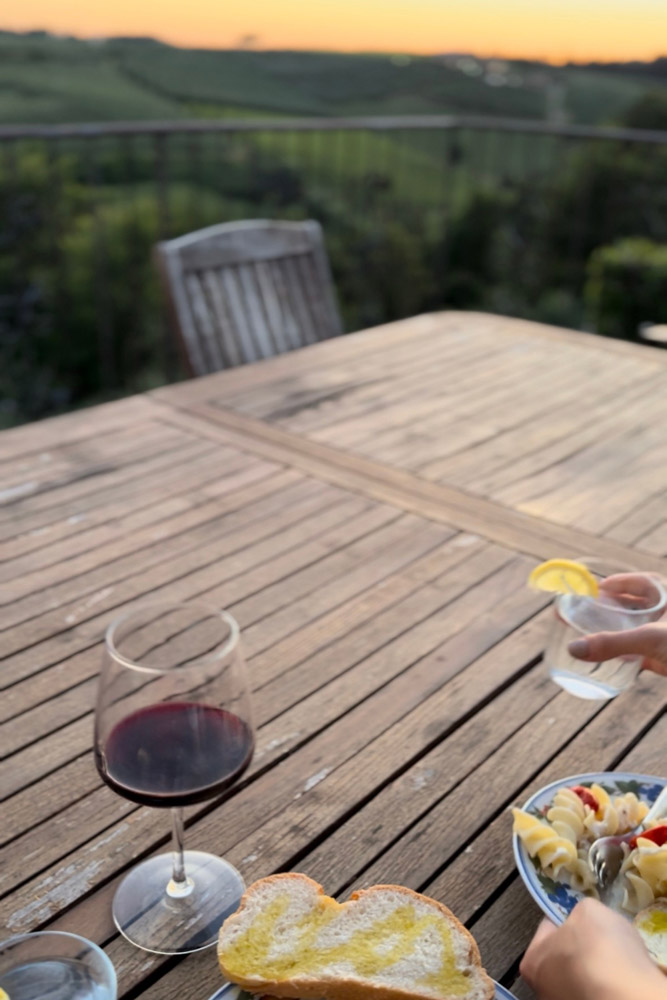
In 1945, engineer Percy Spencer accidentally discovered the cooking power of microwaves when a chocolate bar in his pocket melted while he worked with radar equipment. Just two years later, the first Radarange microwave oven was introduced, and by the 1970s, microwaves had become a staple in kitchens everywhere. They were marketed as a miracle of convenience—heat anything in seconds! Our parents’ generation grew up with these boxes making their food and it was fantastically convenient, especially as more moms entered the work force. Hello microwavable TV dinners!
But then, I started to wonder: how do these things really work, anyway? Why don’t we see them in Europe, but in every American home? For us, looking for alternate ways to heat our food is just part of the journey, about paying attention to what’s really happening to our food and realizing there are better, healthier, and often tastier ways to warm a meal.
- How does using a Microwave really affect your food?
- Microwaves: A cultural trend
- Practical Ways to Reheat Without a Microwave
- Hot Lunches Ideas
- What To Do with the Microwave You Still Have
- Microwave-Free Heating Quick Reference
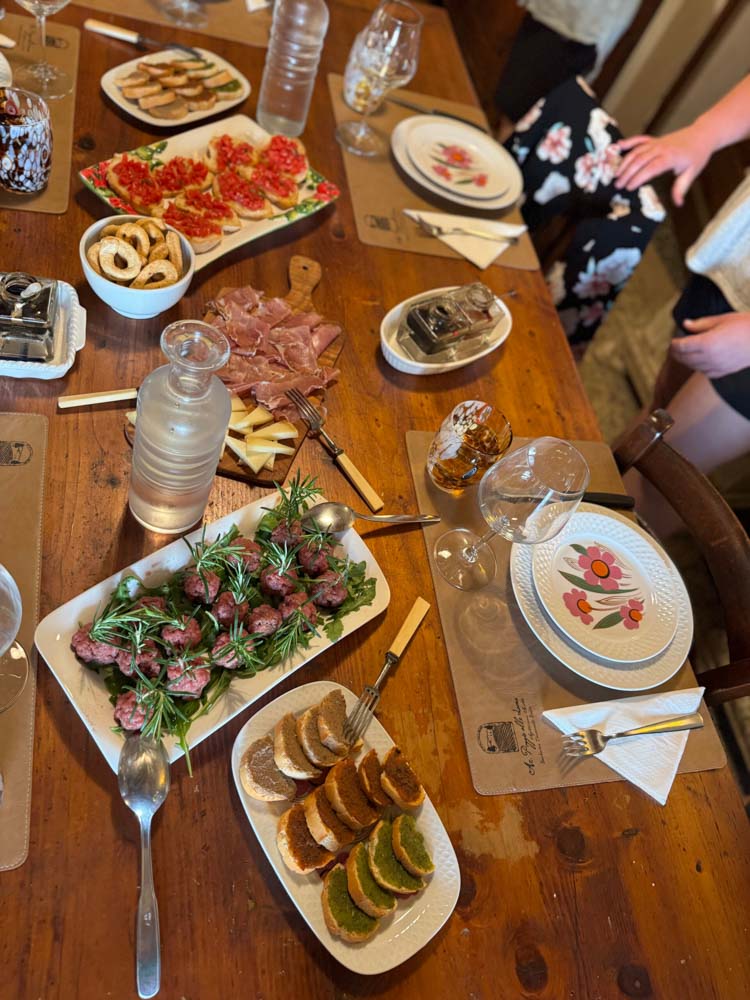
How Microwaves Work (Without the Scary Science)
Microwaves heat food by making water molecules vibrate really fast, which creates heat. It works quickly—but speed doesn’t always equal quality.
Cooking of any kind changes food (that’s the point), but some studies suggest microwaving can zap certain nutrients a little more than steaming or baking would. Vegetables lose more vitamin C, proteins in milk and meats shift differently, and textures sometimes turn out rubbery or uneven.
Does this mean a microwave is “bad”? Not necessarily. It just means there are often better ways—methods that keep both the food’s integrity and our mealtime enjoyment intact.
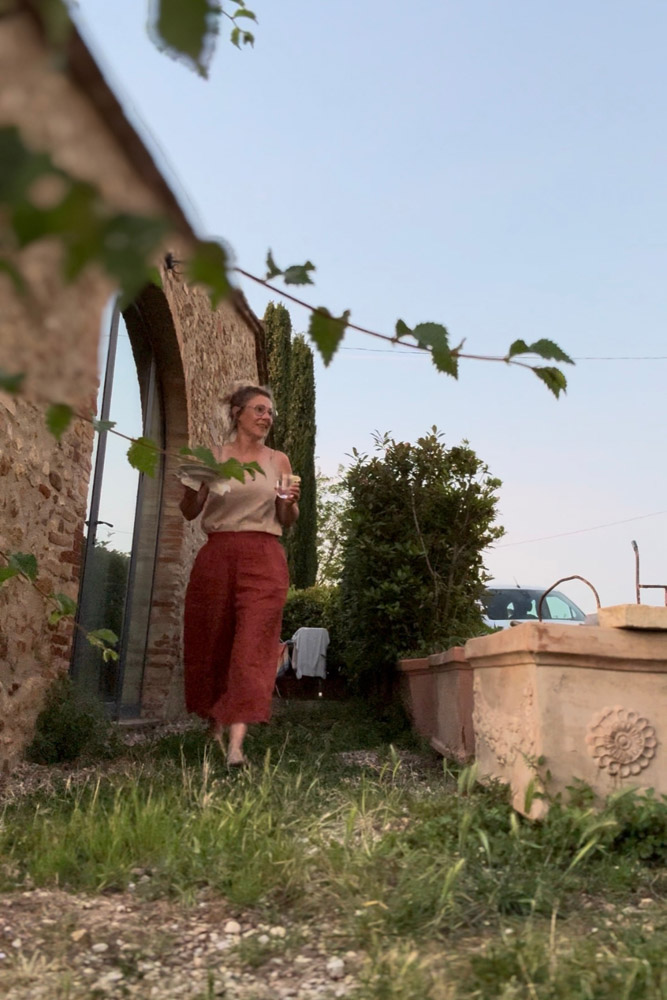
Microwaves: A Cultural Trend
Several years ago, while living in Europe I realized there were no microwaves in the apartments/ homes that I lived in. We would reheat our leftovers on the stove top or in the oven. Partly, because of the electricity they would take to run, but also because of how they changed the nutrients in the food, itself. Several years, later, I would travel to Denmark, Luxemburg and Italy, and I noticed the same. And also something peculiar in our hotels. Away from the breakfast rooms were what were labeled these “microwave rooms.” Long countertops lined the walls with multiple microwaves side by side. When I asked the staff about this, they said, “we just want to keep the radiation all in one room. We have it for the Americans.”
Italians, who take food seriously, preferred stovetops, ovens, and fresh preparation. The microwave was an afterthought. Each time I return from another country that doesn’t use a microwave, I’m compelled a bit more to attempt something different. These experiences stick with me and make me reconsider why I give the appliance such a prime spot in my kitchen at home.
Yes, we still have our microwave for now – it still exists above our stove, simply because I don’t want to tear my kitchen apart just yet. We still use it to warm up our beloved CornBags to toss in the bottom of our beds at night. As is life, and my thoughts about everything in moderation, the new practice isn’t perfect with all six of our family members, but it’s nice to start learning how to reheat our food without it.
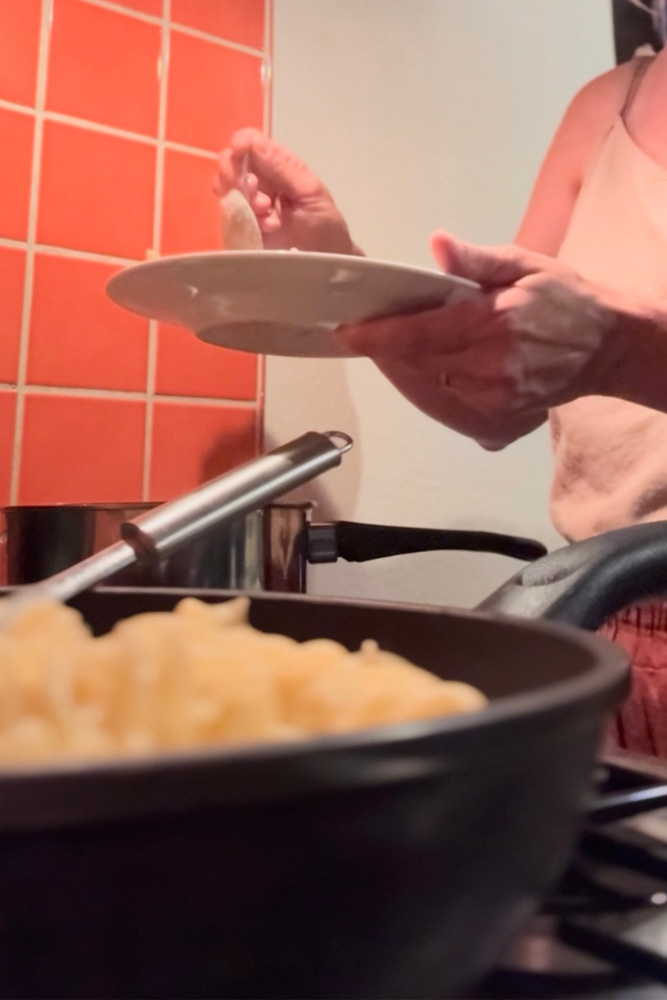
Practical Ways to Reheat Without a Microwave
I’m not saying you should ditch your microwave and invest in all sorts of other counter-sitting heating appliances. If you, too, have been giving this appliance some reconsideration, here is what we’ve been trying to heat our food up without a microwave.
- Stovetop – Soups, stews, pasta, and stir-fries can be quickly revived in a pot or skillet with a splash of broth or water. The flavor often deepens with reheating this way.
- Oven or Toaster Oven – Perfect for casseroles, breads, baked goods, or roasted vegetables. The oven brings back crispness and texture that a microwave can’t.
- Air Fryer – The air fryer has become one of the best stand-ins for the microwave. Leftover pizza, roasted veggies, or even French fries come back to life beautifully with just a few minutes inside. I finally broke down and bought this slim-fit one and these are the liners that we use to keep it clean. It’s also super easy for the kids to make quick meals for themselves without having to start up the stove.
- Steamer Basket – Vegetables, dumplings, or rice can be warmed gently with steam, preserving both texture and nutrients.
- Hot Water Bath – For sauces or even sealed leftovers, placing containers in a pan of hot water can gently warm without changing flavor.
Hot Lunches for Kids (and Adults, Too)
One of the biggest challenges of ditching the microwave is school and work Dinners-On-The-Go. Our solution? Thermos containers.
In the morning, we heat up soup, pasta, chili, or rice-and-veg bowls right on the stove or in the oven. Then we spoon the piping hot food into insulated thermoses, where it stays warm until lunchtime. This way, the kids don’t need to stand in line for the microwave at school, and I don’t have to rely on one at work. It’s a simple shift that keeps meals nourishing and enjoyable, without the rubbery texture or uneven heating microwaves often create.
What To Do with the Microwave You Still Have
If you’re not ready to haul it out, or you’re waiting for the right moment, microwaves can serve a purpose beyond reheating:
- Storage for Cookbooks – The size and shape are surprisingly perfect for keeping cookbooks dust-free and handy.
- Water Bottle or Thermos Station – We’ve used ours to keep all the kids’ water bottles in one place. Just make sure you’ve unplugged it.
- Snack or Bread Bin – I’ve been using ours like a bread box lately.
Microwave-Free Heating Quick Reference
| Food Type | Microwave Alternative | Tips |
|---|---|---|
| Leftover pizza | Air fryer | 3–5 min at 350°F for crisp crust |
| Fries or roasted veggies | Air fryer or oven | Toss lightly with oil; re-crisp at 375°F |
| Pasta or rice | Stovetop skillet or pot | Add splash of water or broth; stir occasionally |
| Soups or stews | Stovetop or hot water bath | Heat gently to avoid boiling; preserves flavor |
| Casseroles | Oven or toaster oven | Cover with foil to prevent drying |
| Eggs (scrambled or cooked) | Stovetop skillet | Reheat on low to medium; add tiny splash of milk if needed |
| Oatmeal | Stovetop or electric kettle + pour-over | Add hot water slowly to reach desired consistency |
| Leftover bread or baked goods | Oven or toaster oven | 2–5 min at 350°F; brings back freshness and warmth |
| Sauces or gravies | Hot water bath | Place in sealed jar; stir occasionally |
Pro Tip: For on-the-go meals, fill insulated thermoses with soups, pasta, or stews heated at home. No microwave needed at school, work, or travel!
Pin for Later!
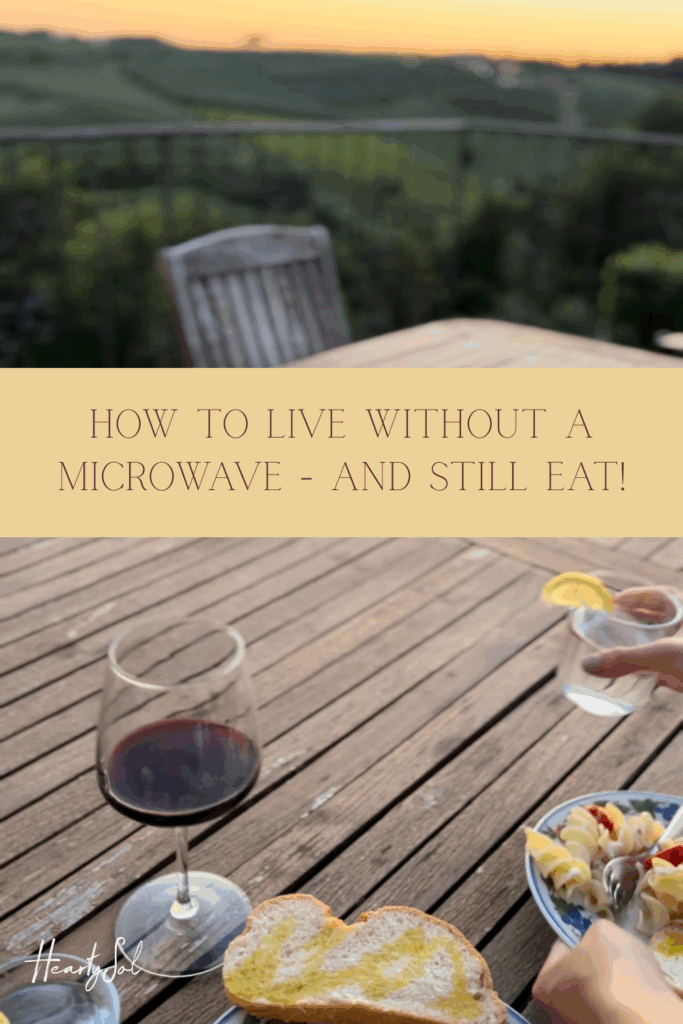
Final Thoughts
Breaking up with the microwave isn’t about going backwards — it’s about going forward with more intention and trading efficiency for quality. Food tastes better, keeps its nutrition, and often feels more satisfying when warmed gently. And while it takes a touch more time, those few extra minutes often invite us to slow down, breathe, and reconnect with the simple act of eating well.
More blogs for your Kitchen

Affiliate Disclosure & Content Disclaimer
This post may contain affiliate links from a paid sponsor, Amazon or other program. When you use these links to make a purchase I earn a small commission at no extra cost to you. This allows me to continue creating the content that you love. The content in this article is created for information only and based on my research and/or opinion.
Emily T.
DAILY INSPIRATION ON THE GRAM @hearty.sol
it's hip to be square!
View comments
+ Leave a comment